How to Obtain Water When it's in Short Supply
Water can be found in many places including where most people overlook.
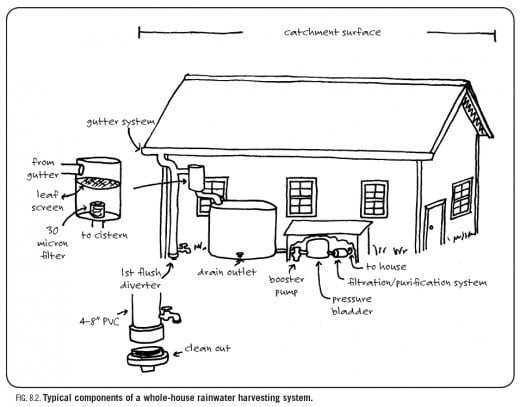
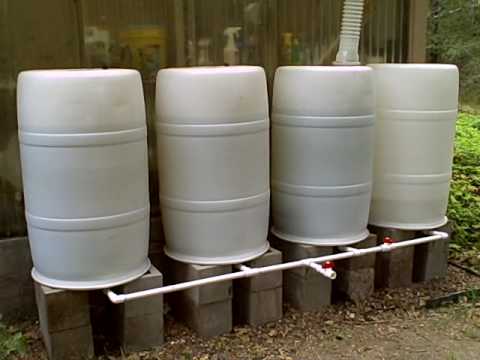
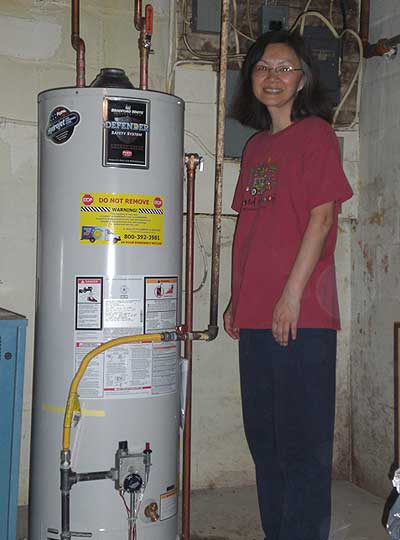
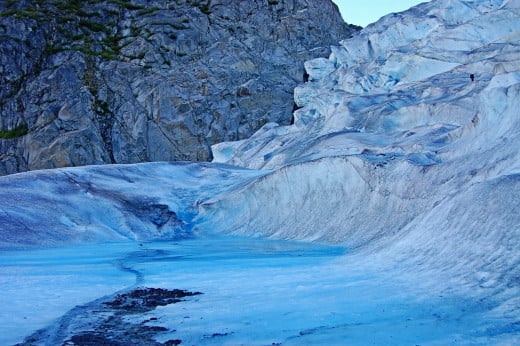
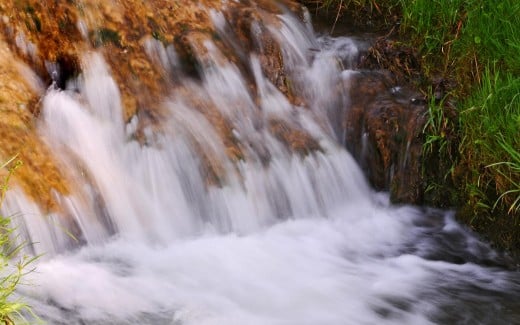
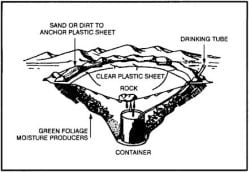
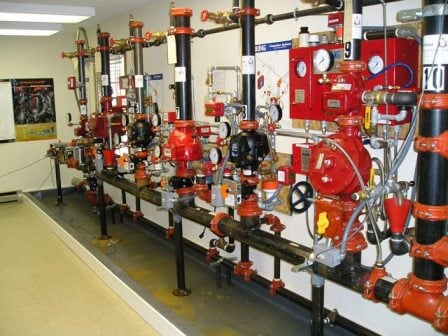
One of the basic skills anyone should have, is the ability to find water.
Water; that essential ingredient of life that we take so much for granted becomes the second most important necessity when it is suddenly not available. The only thing of more desperate need is oxygen. Yet, we can even derive oxygen out of water if need be, so once more we face the importance of water. The old poetic refrain, "water water everywhere, but not a drop to drink" can be literally true. The average person in repose in comfortable surroundings and temperature needs about two liters of water a day. On a hot day under heavy labor, that need can balloon to about ten liters. Consider that water is also involved in cooking, especially for dry goods like pasta or grains like rice, beans and pot barley. For consideration of weight and space, a lot of food you carry initially should be of the dry type.
In a survival situation, the top priority is drinking and cooking water. All other priorities must take a back seat. Only in circumstances where there is enough and does not get in the way of the rights to others to clean drinking water can you consider something like a bath or a shower. We waste a huge quantity of water in our civilized life. When that is suddenly taken away by a disaster, suddenly the priorities become clear.
One of the top priorities in any survival strategy is access to clean abundant water or the ability to make it from less suitable available water. In your travels in the wild, you will find water in ponds, rivers, lakes, waterfalls, glacier outfalls, rainfall, and swamps, in the earth, salt pans and in the ocean. With the exception of glacial outfalls, almost none of it is suitable to drink right from the source. The reasons are many and varied. Where has it been and what has happened in around and above any water source? Think about it and then you can take appropriate steps to make it drinkable. Making clean drinkable water in the wild is not that difficult and there are several things you can do. In a survival situation, you can boil, filter, treat and distill it to obtain the next best thing there is to fresh glacial water. Even today with world wide pollution, even glacial water is not as pure as it used to be.
Glacial water can be drunk fresh from a mountain or glacial run off nearest the source. Water from lakes, running rivers, rainfall and water falls can be boiled and then stored and drunk. Water from stagnant ponds, swamps, oceans and salt pans has to be processed by either a solar still or a more traditional kind that is more often used to make booze. There is even an evaporation collector that can be used on the ocean or in a dug pit to collect evaporating water into a bottle. Let's look at each in turn and decide a good water gathering survival kit. Always carry halizone tablets, a small bottle of chlorine bleach, a large sheet of plastic and collection bottles. You can rig a system to create fresh water where none can be found.
If you are in an area where there is rainfall, you can use a plastic sheet to collect and funnel water into bottles. Designed right, you can collect rain while using it as a shelter too. This water has to be boiled as rain forms around particles like dust, soot and bacteria. In a pinch you can use halizone tablets or a filter. After the rain, you can use the same plastic sheet to collect evaporating condensate from a pit dug in the ground. The idea here is useful on the land and high seas. The idea is to place a collector in the bottom of the pit. Place the plastic over the pit and hold it in place with stones around the rim. Place a stone in the middle of the plastic sheet to form a cone effect with the point over the collector. This works best after the sun just sets and the land is starting to cool. Water in the ground evaporates and contacts the plastic where it condenses and then runs by gravity to the point and drips into the collector. This is naturally distilled water and can be drunk with no further treatment. The only criteria is that depending on the size of the collector and the water content of the ground will define how much water can be gathered this way. In a rain forest a lot of water can be gathered whereas in the desert only a small amount. Plan accordingly.
Every survival kit therefore must haves some form of water containers, collapsible and empty except for one for each member for immediate needs. For each and every member of your family and group, you must have a minimum of two liters during cool days and as much as ten liters on hot humid days. The latter can be very heavy and add a lot to sweating. A balance must be struck. On the hot and humid days, it may be better to travel at night when it is naturally cooler. Many desert travelers use this trick and rest in the hot of the noonday sun under any available shade. In semi arid regions, water can even be found in succulents and cacti that store it. You will have to be familiar with what is safe and what is poisonous. You may consider some kind of cart or pack animal. A pack animal also has water needs so this has to be added to what is immediately necessary. In this circumstance, the best pack animal for desert travel as the desert nomads know, is the camel. Camels can go for a week without drinking a spot of water in the heat of the day. They evolved to live in very dry climates and have even evolved feet ideal for sandy conditions.
Even if you don't go camping and prefer to stay in the city, knowing how to procure water in any circumstance is a good skill in the event of a natural disaster, or even a man-made one. Anything disruptive can completely cut off the water supply, such as an earthquake, a flood, hurricane, tornado, war or terrorism. Even wear and tear on an aging infrastructure is enough to cut off the water supply. You need to have a reserve supply or know where to look. Should the water be cut off, there are two main back up supplies in your home or office, being the toilet tanks and the hot water tank. In office towers and public buildings, water can even be found inside the water sprinkler and riser system. This will have to be filtered. Outside, water may be hiding in plain sight in storm drains, planters or discarded tires. If you use water from this source, it will need a lot of preparation. If you consider car radiators, the problem here is that there's a good chance that anti-freeze may be in the water of the cars cooling system.
In an era of water shortages, everyone is concerned about getting enough for basic needs and water conservation. This is a good skill set to have in the event that one day you yourself are faced with an acute shortage.








